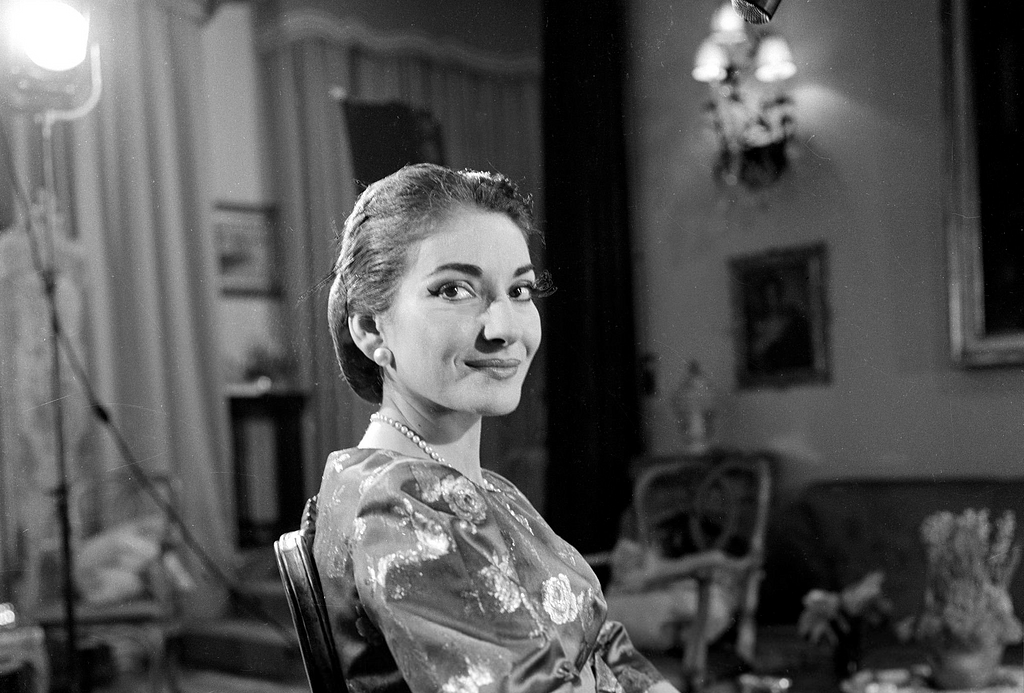Maria Callas: The Life and Legacy of La Divina

Maria Callas, often hailed as “La Divina” (The Divine), was one of the most iconic and influential opera singers of the 20th century. Her life, marked by dramatic highs and lows, mirrored the intense emotions of the operatic roles she so brilliantly portrayed. Callas’s contributions to opera, her unique vocal style, and her personal charisma continue to captivate audiences worldwide.
Early Life and Beginnings
Maria Callas was born as Maria Anna Cecilia Sophia Kalogeropoulos on December 2, 1923, in New York City to Greek immigrant parents. Her early years were challenging, marked by her parents’ troubled marriage and financial difficulties. In 1937, following her parents’ separation, Callas moved to Greece with her mother and sister, a move that would shape her future.
In Greece, Callas enrolled at the Athens Conservatoire, where she studied under the guidance of Elvira de Hidalgo. De Hidalgo recognized Callas’s prodigious talent and worked to develop her vocal technique. Callas’s early performances in Greece showcased her burgeoning talent and caught the attention of critics and audiences alike.
Rise to Fame
Callas’s international breakthrough came in the late 1940s. After a series of performances in Italy, she made her debut at the prestigious La Scala opera house in Milan in 1950. Her performance in Verdi’s “I Vespri Siciliani” established her as a formidable presence in the opera world.
Throughout the 1950s, Callas’s career soared. She became known for her versatility, tackling a diverse repertoire that ranged from bel canto masterpieces by Bellini and Donizetti to dramatic roles in operas by Verdi and Puccini. Her ability to convey profound emotion through her voice, combined with her striking stage presence, set her apart from her contemporaries.
One of Callas’s most celebrated roles was that of Norma in Bellini’s opera of the same name. Her interpretation of the aria “Casta Diva” became legendary, showcasing her remarkable control, phrasing, and emotional depth. Callas’s portrayal of Violetta in Verdi’s “La Traviata” and Tosca in Puccini’s “Tosca” were also critically acclaimed and remain iconic to this day.
Vocal Style and Technique
Maria Callas’s voice was distinctive, characterized by its dramatic intensity and emotional expressiveness. Her vocal range spanned three octaves, and she possessed an uncanny ability to convey the psychological complexities of her characters. Callas’s voice evolved over the years, and while it was not always technically flawless, it was imbued with a unique timbre that captivated audiences.
Callas was a master of the bel canto style, known for its emphasis on beautiful, lyrical singing. She brought a new level of dramatic realism to her performances, prioritizing emotional authenticity over mere vocal perfection. This approach sometimes drew criticism from purists, but it endeared her to fans who appreciated her passionate interpretations.
Personal Life and Controversies
Callas’s personal life was as dramatic as her on-stage performances. In 1949, she married Italian industrialist Giovanni Battista Meneghini, who became her manager and played a significant role in shaping her career. However, their marriage was strained by Callas’s demanding career and Meneghini’s controlling nature. They divorced in 1959.
One of the most sensational episodes in Callas’s life was her tumultuous relationship with Greek shipping magnate Aristotle Onassis. Their affair, which began in the late 1950s, was highly publicized and ended acrimoniously when Onassis left Callas for Jacqueline Kennedy, the widow of U.S. President John F. Kennedy.
Decline and Legacy
In the early 1960s, Callas’s voice began to show signs of strain. Her demanding schedule and the emotional toll of her personal life took a toll on her vocal health. Despite these challenges, she continued to perform, albeit less frequently. Her final operatic performance was in 1965 as Tosca at the Royal Opera House in London.
Callas spent her later years in relative seclusion in Paris. She gave occasional masterclasses and recordings, but her once-glorious career was effectively over. On September 16, 1977, Maria Callas passed away at the age of 53, leaving behind a legacy that continues to influence and inspire.
Enduring Influence
Maria Callas’s impact on opera is immeasurable. She revitalized interest in the bel canto repertoire and brought a new level of dramatic intensity to her performances. Callas’s recordings remain bestsellers, and her interpretations of roles like Norma, Violetta, and Tosca are still considered definitive.
Callas’s life and career have been the subject of numerous books, documentaries, and films. Her story, marked by triumph and tragedy, continues to fascinate audiences. In 2007, the Maria Callas Museum opened in Athens, celebrating her legacy and preserving her memory for future generations.
Conclusion
Maria Callas was more than just a singer; she was a transformative artist who reshaped the world of opera. Her passionate performances, unique vocal style, and dramatic life story have ensured her place in the pantheon of great artists. La Divina’s legacy lives on, a testament to the power of music and the enduring allure of one of opera’s most legendary figures.





